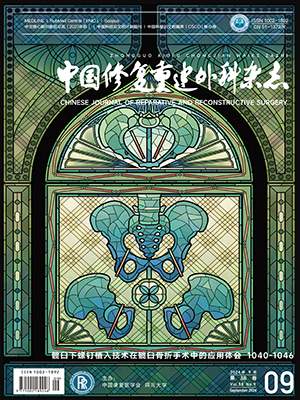Considering the abundant vascular anastomotic networks in the deep fascia of the posterior calf, three kinds of distally based facial flap containing deep fascial vascular network were applied clinically. They were: 1. posterolateral distally based island fascial flap which could be used to repair the skin defect of heel, dorsum of foot and lateral-distal part of leg; 2. posteromedial distally based island fascial flap which could be used to repair the skin defect of heel, medial malleolus and medial-distal part of leg and 3. posterolateral malleolar distally based fascial flap which could be used to repair the skin defect of heel and lateral malleolus. Eighteen cases with soft tissue defects around the distal calf were treated, the area of skin defect ranged from 4 cm x 3 cm to 13 cm x 6 cm. All the flaps were survived completely after operation with an average of follow-up for 15 months (ranged from 6 months to 2 years). So the advantages of these flaps were as follows: the blood supply was reliable, preparation of the flap was easy and the major arteries of the calf needed not be sacrificed; the flap had a long and rotatable pedicle so that they would basically satisfy the need to repair skin defect of lower leg, dorsum of foot, heel and malleolus and the resistance of the flap to pressure and wear was better. However, the injury to the superficial sural nerve was the shortcoming.
Citation: Zhang Zengfang,Yang Liangen,Song Yuqin et al.. THREE KINDS OF DISTALLY BASED FASCIAL FLAP CONTAINING DEEP FASCIAL VESSEL NETWORK ON THE POSTERIOR CALF. Chinese Journal of Reparative and Reconstructive Surgery, 1997, 11(6): 356-358. doi: Copy




